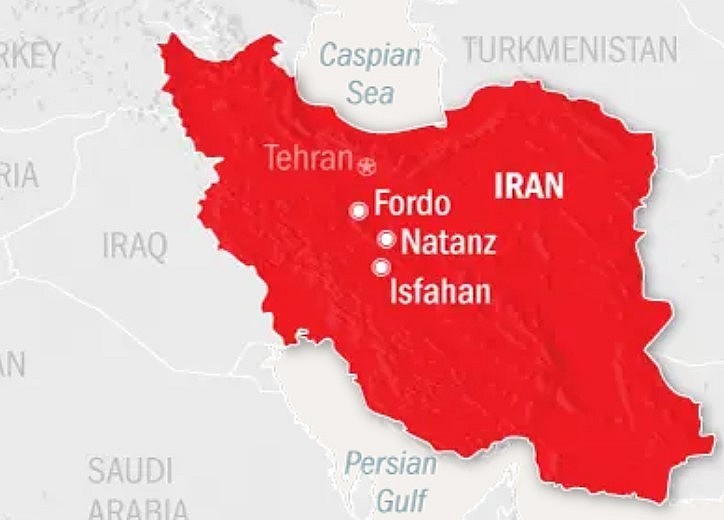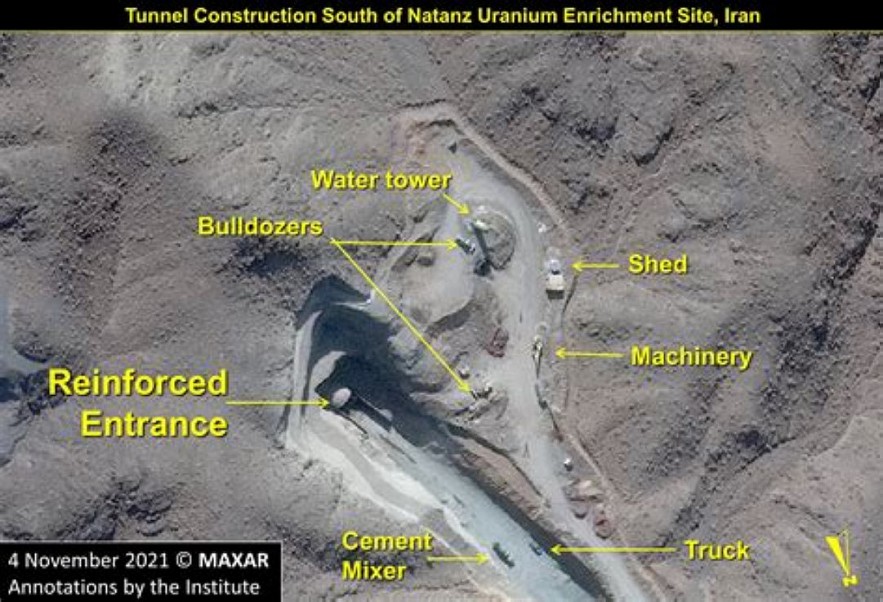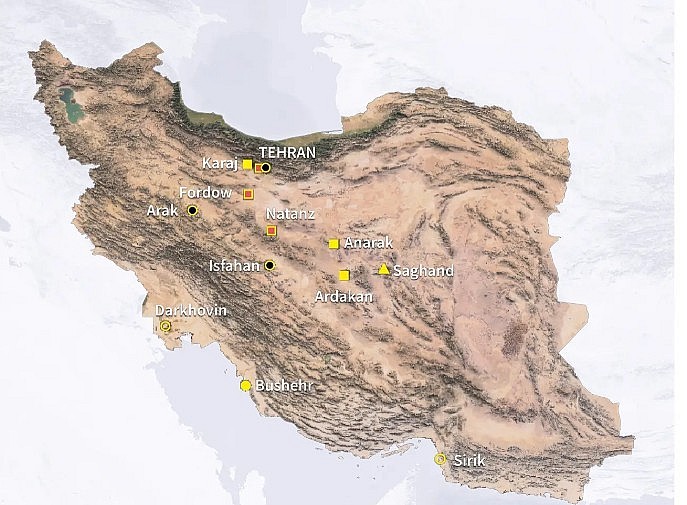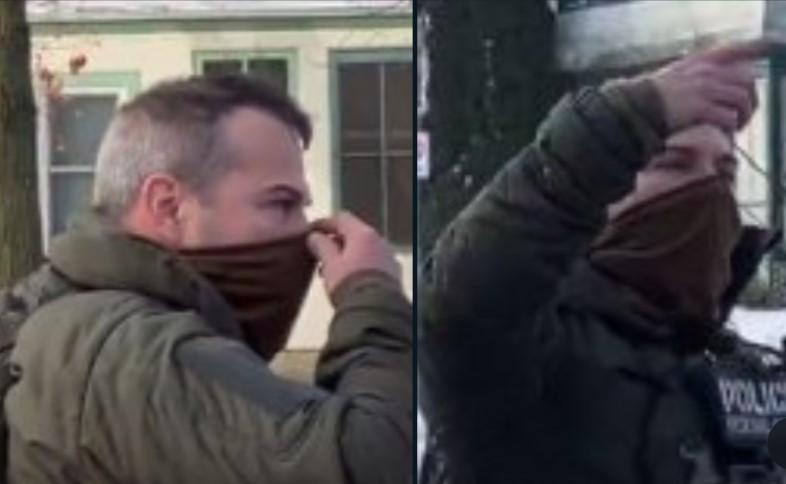Where Did the US Bomb in Iran? Inside the Three Nuclear Sites Triangle Attack
In June 2025, the United States executed one of the most decisive and risky military operations of the decade: precision airstrikes on three of Iran’s most critical nuclear sites. The locations were not random. The facilities—Fordow, Natanz, and Isfahan—represent the backbone of Iran’s nuclear enrichment and weaponization pipeline. Understanding where the U.S. struck is crucial to grasping the broader implications: technical, strategic, legal, and geopolitical.
This article breaks down, in approximately 3,000 words, the exact locations of the airstrikes, what was hit, why these places were chosen, how the mission was carried out, and what the aftermath looks like.
 |
| Where Exactly Were the U.S. Bombing Runs |
1. Fordow Fuel Enrichment Plant (Qom Province)
Location and Structure
Fordow is located approximately 90 kilometers southwest of Tehran, near the religious city of Qom in central Iran. It was built inside a mountain, at depths estimated between 80 to 110 meters underground, with natural rock shielding providing significant protection against aerial bombardment. The facility is highly fortified, with limited surface infrastructure, tunnel entrances, and an underground complex designed to be impenetrable by conventional airstrikes. This topographical and architectural setup made Fordow the most difficult of the three sites to neutralize.
Strategic Importance
Fordow holds exceptional strategic and symbolic importance for Iran. After the U.S. withdrew from the 2015 Joint Comprehensive Plan of Action (JCPOA), Iran resumed high-level uranium enrichment at this site. By 2023, International Atomic Energy Agency (IAEA) inspectors reported uranium enrichment levels at Fordow reaching 83.7% U-235, dangerously close to weapons-grade levels. This site became a focal point of international concern and a red line in nuclear negotiations.
Tactical Execution of the Strike
Due to its heavily fortified nature, Fordow could only be destroyed using specialized bunker-busting munitions. The U.S. deployed B-2 Spirit stealth bombers capable of penetrating Iran’s air defense systems undetected. These aircraft carried GBU-57A/B Massive Ordnance Penetrator bombs, each weighing 30,000 pounds and specifically engineered to destroy deeply buried facilities. The strike was conducted around 2:30 a.m. local time to minimize civilian risk and take advantage of reduced Iranian air traffic and response capacity.
Immediate Results and Damage Assessment
Satellite imagery in the days following the strike revealed significant terrain deformation consistent with subsurface collapse. Although Iran has not released full details of the damage, multiple intelligence sources confirmed the destruction of the main centrifuge halls. The facility is presumed inoperable for the foreseeable future, representing a substantial setback to Iran’s nuclear ambitions.
Read more: Inside Iran’s Nuclear Fortress Fordow: The Truth About the Mountain-Deep Centrifuge Halls
2. Natanz Nuclear Enrichment Facility (Isfahan Province)
 |
| Natanz Nuclear Site in Iran |
Location and Layout
Natanz is located in central Iran, approximately 250 kilometers south of Tehran and near the city of Kashan in Isfahan Province. Unlike Fordow, Natanz spans a semi-arid desert terrain and includes both above-ground and shallow underground segments. The sprawling complex contains multiple enrichment halls, storage facilities, administrative buildings, and a pilot fuel enrichment plant.
Strategic Role in Iran’s Nuclear Program
Natanz has long been the centerpiece of Iran’s nuclear enrichment program. It houses thousands of centrifuges, including older IR-1 models and more advanced IR-6 models capable of enriching uranium at higher speeds and volumes. The facility plays a central role in the mass production of enriched uranium, serving as the backbone of Iran’s nuclear output.
Despite various sabotage efforts over the years, including a cyberattack (Stuxnet) in 2010 and physical sabotage in 2021, Natanz continued to function and expand. By mid-2025, it remained a critical site for the enrichment of uranium hexafluoride (UF6) gas.
Details of the Strike
The U.S. strike on Natanz utilized a different set of munitions compared to Fordow. Precision-guided bunker busters such as the GBU-31(V)3 and GBU-28 were employed to target both the above-ground centrifuge halls and lightly buried facilities. The operation was designed to incapacitate the facility without causing widespread contamination or civilian casualties.
Coordination with earlier Israeli strikes allowed the U.S. to focus on deeper infrastructure and surviving systems. Israeli attacks in early June had already damaged some of the facility’s surface components and weakened its air defenses.
Effects of the Strike
Post-strike imagery and insider reports indicated the destruction of over 1,700 centrifuges. Multiple underground cascade halls were rendered inoperative. Reports of chemical contamination were later confirmed by independent analysts, though radiation levels remained within safe limits. The IAEA’s inability to access the site post-strike limited full damage verification, but intelligence consensus suggests a significant loss of enrichment capacity.
 |
| Nuke Sites in Iran |
3. Isfahan (Esfahan) Nuclear Conversion Facility
Geographic and Operational Context
The Isfahan nuclear facility is situated near the historic city of Isfahan, within a broader industrial and academic zone. It forms part of the Esfahan Nuclear Technology Center and includes units for uranium conversion, fuel fabrication, metal production, and waste processing. Unlike Fordow or Natanz, Isfahan is more vulnerable due to its relatively shallow structures and proximity to civilian infrastructure.
Strategic Function in Iran’s Nuclear Chain
Isfahan’s primary role is in converting milled uranium ore (yellowcake) into uranium hexafluoride (UF6) gas and uranium metal—both essential for further enrichment and potential weaponization. It also serves as a storage and preparation facility, housing raw and processed materials. Disabling Isfahan would deny Iran the ability to feed centrifuges at Fordow or Natanz, thereby halting the nuclear fuel cycle.
Execution of the Attack
Because of its urban proximity and chemical hazards, the strike on Isfahan had to be extremely precise. The U.S. deployed small-diameter precision-guided bombs, such as the GBU-39, to target specific warehouses and conversion units. The strike was synchronized with the attacks on Fordow and Natanz to prevent Iran from relocating materials or activating emergency defenses.
Consequences and Observations
At least four major buildings were confirmed destroyed. Iranian emergency services responded in hazmat gear, suggesting potential leaks of toxic UF6 gas. While the government claimed no casualties, independent sources noted panic and confusion in adjacent neighborhoods. The facility’s critical equipment is presumed to be heavily damaged, disrupting Iran’s capacity to convert and store uranium.
Strategic Logic: The Triangle Strike Pattern
Taken together, the three airstrikes formed a triangular pattern that targeted Iran’s nuclear program at every functional stage. Fordow handled deep-level enrichment, Natanz served as the volume processor, and Isfahan supplied the necessary feedstock. Destroying all three simultaneously disrupted Iran’s entire nuclear life-cycle.
This strategy was not just about destroying infrastructure; it was designed to impose a psychological and logistical setback, delaying any potential restart by months or even years. Iran now faces the prospect of rebuilding three critical facilities under increased international scrutiny and without access to many of the components previously sourced from abroad.
Global Fallout and Geopolitical Reactions
Iranian Response
The Iranian government downplayed the extent of the damage while threatening retaliation through proxies such as Hezbollah and the Houthis. Domestically, confusion and fear spread in the wake of the strikes, especially near Isfahan, where chemical exposure risks were reported.
Israeli Coordination
Israeli intelligence played a pivotal role in the selection and timing of the targets. Israeli forces had launched preemptive attacks on Fordow and Natanz earlier in June, softening defenses and gathering data. Israeli officials hailed the U.S. strike as a necessary escalation.
U.S. Political Reaction
President Trump declared the operation a complete success and urged Iran to return to the negotiating table. The Republican leadership largely supported the action. In contrast, Democratic leaders questioned the lack of Congressional authorization and expressed concerns over international legal violations.
International Community
The international response was mixed. Russia and China condemned the strike, calling it a unilateral escalation. European nations urged restraint and re-engagement through diplomacy. Australia began evacuating its citizens from Iran and nearby regions, fearing broader conflict.
Featured Snippet Answer:
Q: Where did the US bomb in Iran in June 2025?
A: The United States targeted three Iranian nuclear facilities: Fordow near Qom (deep enrichment), Natanz in Isfahan Province (mass uranium enrichment), and the Isfahan Nuclear Technology Center (uranium conversion and storage). Each strike was strategically planned to disable Iran’s nuclear capabilities across the entire development cycle.
Conclusion: The Importance of "Where"
The June 2025 airstrikes by the United States were not just about sending a message—they were about breaking a system. By targeting Fordow, Natanz, and Isfahan, the U.S. dismantled the geographic and functional architecture of Iran’s nuclear ambitions. The choice of targets reflected a deep understanding of how Iran's program operated, and the precision of the attacks demonstrated a level of tactical sophistication that achieved maximum impact with limited collateral damage.
Understanding where the U.S. bombed is critical not only for military analysts and policy makers but also for anyone trying to understand how modern warfare intersects with nuclear deterrence and global diplomacy.
Frequently Asked Questions (FAQs)
1. Why did the U.S. bomb these specific sites in Iran?
The U.S. targeted Fordow, Natanz, and Isfahan because each plays a distinct and critical role in Iran’s nuclear program. Fordow handles deep underground enrichment, Natanz is responsible for high-volume uranium processing, and Isfahan manages uranium conversion and storage. Striking all three simultaneously crippled Iran’s nuclear capability across the entire chain of development.
2. What type of bombs were used in the strikes?
The U.S. used specialized precision-guided munitions. At Fordow, B-2 bombers delivered GBU-57A/B Massive Ordnance Penetrators (MOPs) to breach fortified underground vaults. At Natanz and Isfahan, the U.S. employed smaller precision bombs like GBU-28 and GBU-39 to strike more accessible targets with minimal collateral damage.
3. Were there any civilian casualties reported?
There have been no confirmed civilian casualties reported from the strikes. The timing and precision of the attacks were intended to minimize civilian risk, especially at Isfahan, which is close to populated areas. However, there were reports of panic and evacuations following chemical leaks.
4. How did Iran respond to the airstrikes?
Iran condemned the attacks and threatened retaliation. While direct military retaliation has not occurred, Iran has activated regional proxies like Hezbollah and the Houthis to threaten U.S. and allied interests in the region. The Iranian government also launched a disinformation campaign minimizing the extent of the damage.
5. What has been the global reaction to the strikes?
The global response has been mixed. U.S. allies like Israel praised the operation, while adversaries like Russia and China condemned it. European countries called for de-escalation and renewed diplomatic efforts. International bodies like the IAEA have demanded access to assess the damage but were denied by Iran.
6. How long will it take Iran to recover from the strikes?
Recovery timelines are uncertain. Experts estimate that rebuilding the affected facilities could take years, especially with sanctions limiting access to nuclear technology and equipment. Iran’s ability to restart its nuclear program depends heavily on external support and internal political decisions.























